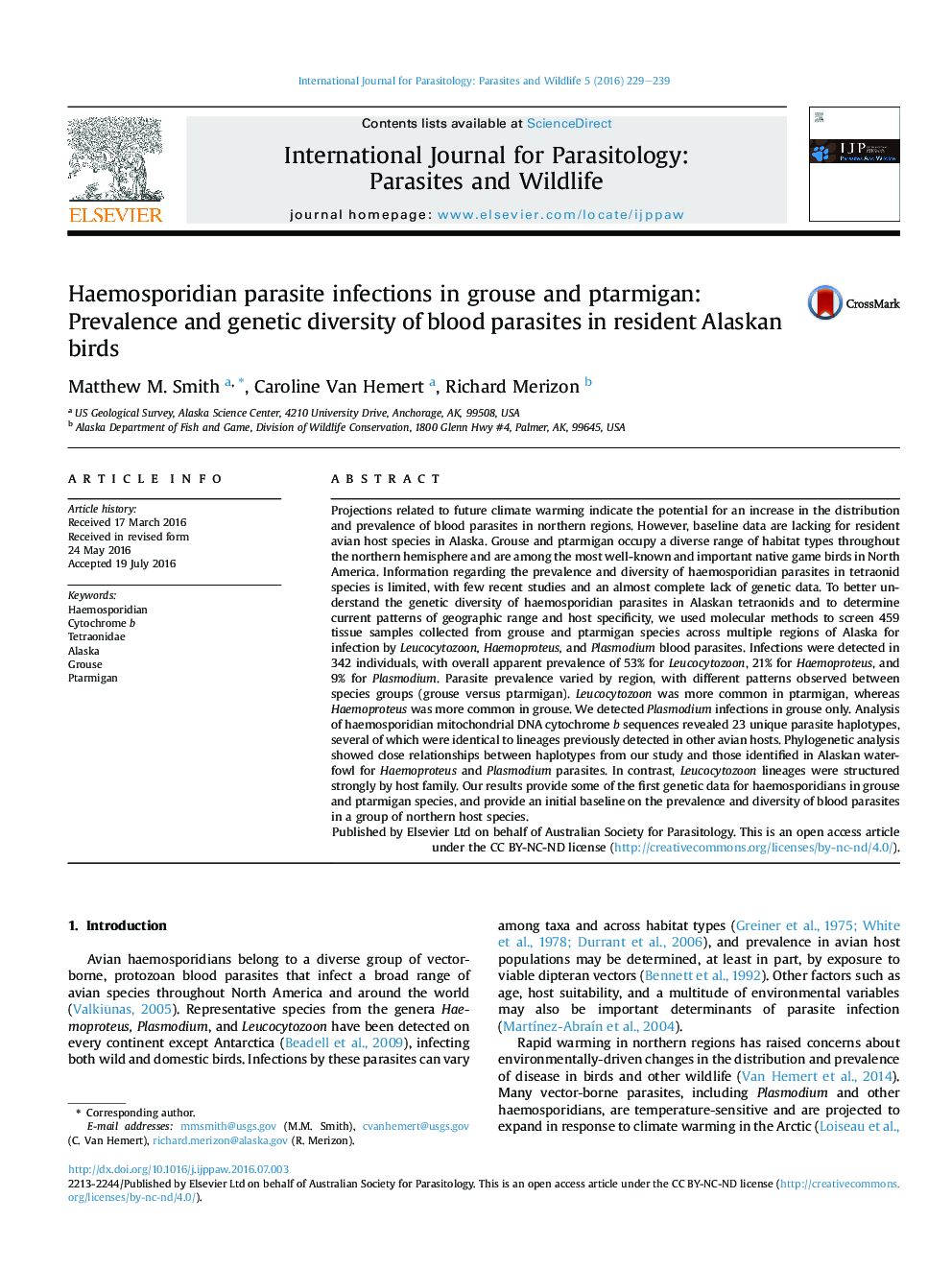| کد مقاله | کد نشریه | سال انتشار | مقاله انگلیسی | نسخه تمام متن |
|---|---|---|---|---|
| 2055156 | 1401039 | 2016 | 11 صفحه PDF | دانلود رایگان |
• Grouse and ptarmigan were sampled from multiple regions of Alaska (n = 459).
• Overall apparent prevalence of 74.5% for three genera of haemosporidian parasites.
• Prevalence varied geographically and by species group (grouse versus ptarmigan).
• Twenty-three unique haemosporidian lineages were identified by DNA sequencing.
Projections related to future climate warming indicate the potential for an increase in the distribution and prevalence of blood parasites in northern regions. However, baseline data are lacking for resident avian host species in Alaska. Grouse and ptarmigan occupy a diverse range of habitat types throughout the northern hemisphere and are among the most well-known and important native game birds in North America. Information regarding the prevalence and diversity of haemosporidian parasites in tetraonid species is limited, with few recent studies and an almost complete lack of genetic data. To better understand the genetic diversity of haemosporidian parasites in Alaskan tetraonids and to determine current patterns of geographic range and host specificity, we used molecular methods to screen 459 tissue samples collected from grouse and ptarmigan species across multiple regions of Alaska for infection by Leucocytozoon, Haemoproteus, and Plasmodium blood parasites. Infections were detected in 342 individuals, with overall apparent prevalence of 53% for Leucocytozoon, 21% for Haemoproteus, and 9% for Plasmodium. Parasite prevalence varied by region, with different patterns observed between species groups (grouse versus ptarmigan). Leucocytozoon was more common in ptarmigan, whereas Haemoproteus was more common in grouse. We detected Plasmodium infections in grouse only. Analysis of haemosporidian mitochondrial DNA cytochrome b sequences revealed 23 unique parasite haplotypes, several of which were identical to lineages previously detected in other avian hosts. Phylogenetic analysis showed close relationships between haplotypes from our study and those identified in Alaskan waterfowl for Haemoproteus and Plasmodium parasites. In contrast, Leucocytozoon lineages were structured strongly by host family. Our results provide some of the first genetic data for haemosporidians in grouse and ptarmigan species, and provide an initial baseline on the prevalence and diversity of blood parasites in a group of northern host species.
Figure optionsDownload as PowerPoint slide
Journal: International Journal for Parasitology: Parasites and Wildlife - Volume 5, Issue 3, December 2016, Pages 229–239
